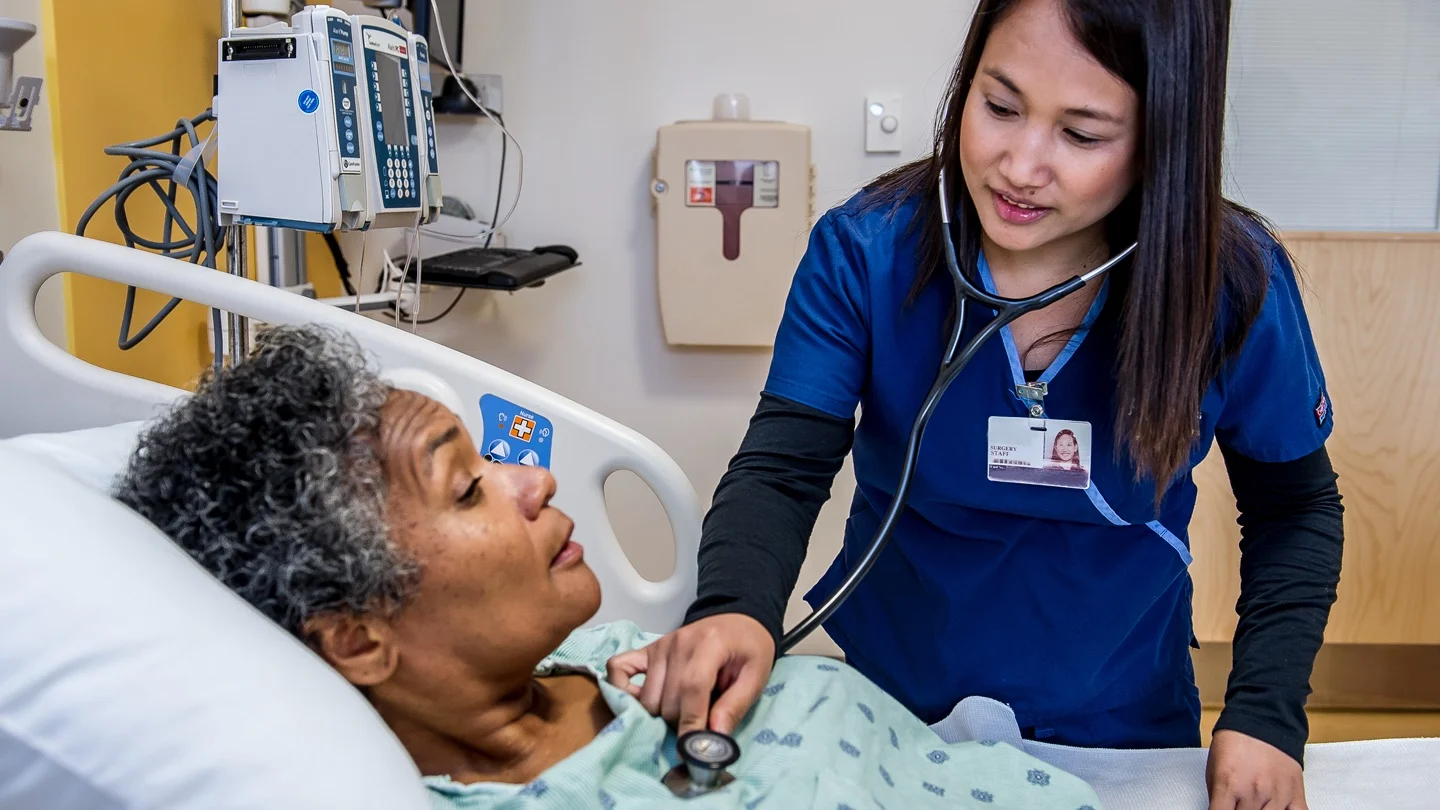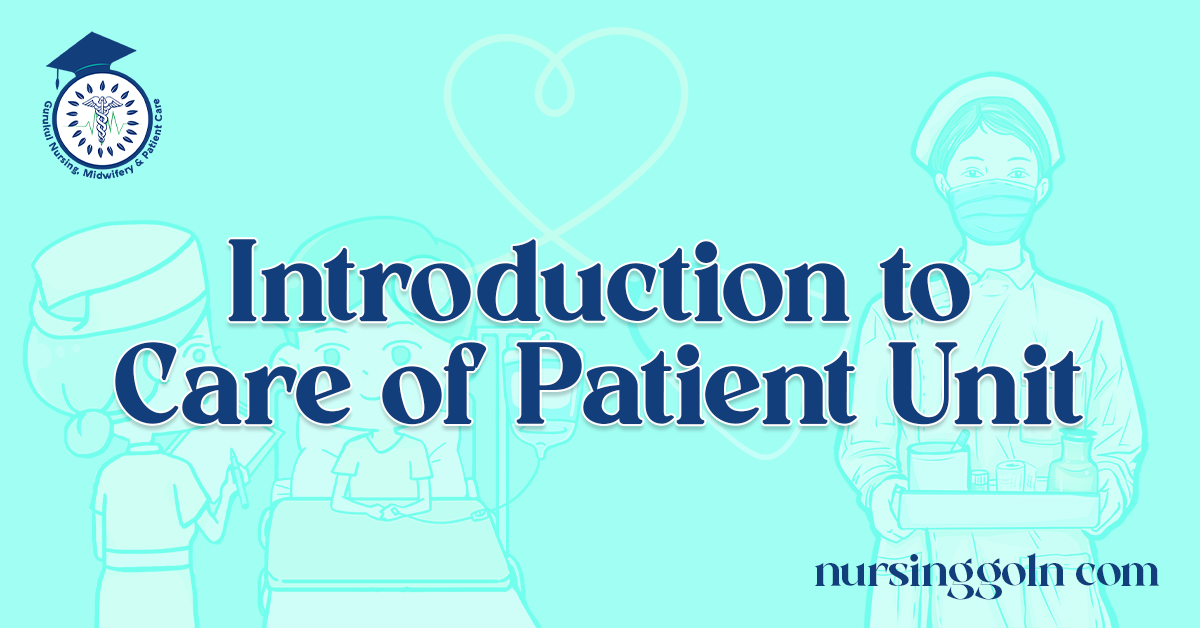Today our topic of discussion is Introduction to Care of Patient Unit. The duty of the nurse is to ensure that the patients unit is kept clean and tidy at all times. She should learn all the cleaning skills in order to teach others and should willingly clean where necessary. The patient and his relatives are also taught to keep the unit clean and tidy.
Introduction to Care of Patient Unit

DEFINITION
Care of patient unit is defined as keeping the patients unit clean, neat and tidy. It also helps to provide maximum comfort to the patient (Fig. 5.1) Patients unit is the area furnished and equipped
according to the need to give adequate care to the patient • Sufficient air movement to evaporate sweats and favors vascular changes within the skin.

Atmospheric pressure within man’s tolerance Provision for disposal of refuse/excreta
Removal of dust. Injurious chemicals and pathogenic bacteria from the atmospheric air Reasonable cleanliness of all surface and furnishing that the individual is likely to handle .

A dwelling place frees from insects, animal pests, fire hazards, mechanical injuries, electric shocks, radiation and poisons .Freedom from disagreeable odors and noises, harmony of town and design in the immediate surroundings. Provision of privacy, etc.
The patient unit is a designated area in a healthcare facility where patients are admitted for care. This space typically consists of the patient’s bed, bedside table, chairs, necessary medical equipment, and personal storage space. The care of this area is paramount for several reasons:
- Infection Control: A clean and well-maintained patient unit reduces the risk of healthcare-associated infections (HAIs).
- Safety: Ensuring that the patient unit is free from hazards can prevent accidents and injuries.
- Patient Comfort and Satisfaction: A clean, organized, and comfortable environment promotes relaxation, reduces stress, and can expedite the recovery process.
Infection Control and Sterility
One of the primary concerns in the patient unit’s care is infection control. Despite the advancements in healthcare, HAIs continue to be a significant challenge.
a. Regular Cleaning: Routine cleaning of surfaces, especially high-touch areas such as bed rails, doorknobs, and call buttons, can significantly reduce the spread of pathogens.
b. Hand Hygiene: Encourage patients, staff, and visitors to practice regular hand hygiene. Hand sanitizers should be easily accessible.
c. Linen Management: Used linens should be handled with care, avoiding any shaking, and should be changed regularly or immediately if soiled.
d. Waste Management: Properly segregate and dispose of waste, especially biohazardous waste.
e. Equipment Sterilization: Any equipment that comes in contact with the patient should be thoroughly cleaned and sterilized between uses.
Ensuring Patient Safety
Patient safety encompasses preventing accidents, ensuring proper function of equipment, and creating a hazard-free environment.
a. Fall Prevention:
- Ensure that bed rails are up.
- Provide non-slip footwear.
- Keep floors free from clutter.
b. Equipment Safety:
- Regularly check the functioning of equipment.
- Ensure electrical cords are tucked away and not posing a tripping hazard.
c. Safe Patient Handling:
- Use proper techniques and, if available, lifting equipment to move patients safely.
Comfort and Personalization
For many patients, a hospital or care facility can feel alien and impersonal. Enhancing comfort can significantly influence their overall well-being.
a. Personal Items: Allow patients to have personal items such as photographs or comfort items, as long as they don’t interfere with medical care.
b. Room Temperature: Ensure the patient unit maintains a comfortable temperature. Offer additional blankets or adjust room temperatures when needed.
c. Noise Control: Keeping the noise level down promotes relaxation and rest. Use earplugs or noise-cancelling headphones if necessary.
d. Lighting: Natural light can have therapeutic effects. If possible, ensure patients get a daily dose of sunlight or can control the lighting in their room.
Routine Inspection and Maintenance
Regularly inspect the patient unit for any damages or potential hazards.
a. Equipment: Ensure all equipment, including beds, monitors, and IV stands, is in good working condition.
b. Fixtures: Check for any loose fixtures, including rails, handles, or lighting fixtures.
c. Floors: Immediately attend to any spills to prevent slips. Regularly check for wear and tear, which could pose tripping hazards.
Patient Privacy
Respecting patient privacy is an integral aspect of care.
a. Confidential Conversations: Discuss sensitive information with patients away from visitors or other patients.
b. Physical Privacy: Use curtains or screens during examinations or procedures.
c. Data Privacy: Ensure all patient records are kept confidential and only accessed by authorized personnel.
Communication and Engagement
The patient unit is also a space for interaction and communication.
a. Information Boards: Use boards to provide essential details about the patient’s care, such as daily schedules or care team names.
b. Patient Feedback: Regularly engage patients in feedback about their environment. This can offer insights into potential improvements.
Educating Patients and Families
Knowledge is empowering. Educate patients and their families about the importance of maintaining a clean and safe environment.
a. Hand Hygiene: Inform about the importance of regular hand washing or sanitizing.
b. Safety Protocols: Educate about the safety measures in place and how they can contribute.

Proper care of the patient unit is not just about cleanliness and organization. It’s a comprehensive approach that encompasses safety, comfort, communication, and respect. Such care fosters a therapeutic environment, promotes faster recovery, and ensures that healthcare standards are maintained. It’s a collective responsibility, and every stakeholder, from the healthcare team to the patient and their families, plays a crucial role in its upkeep.
Read more:
